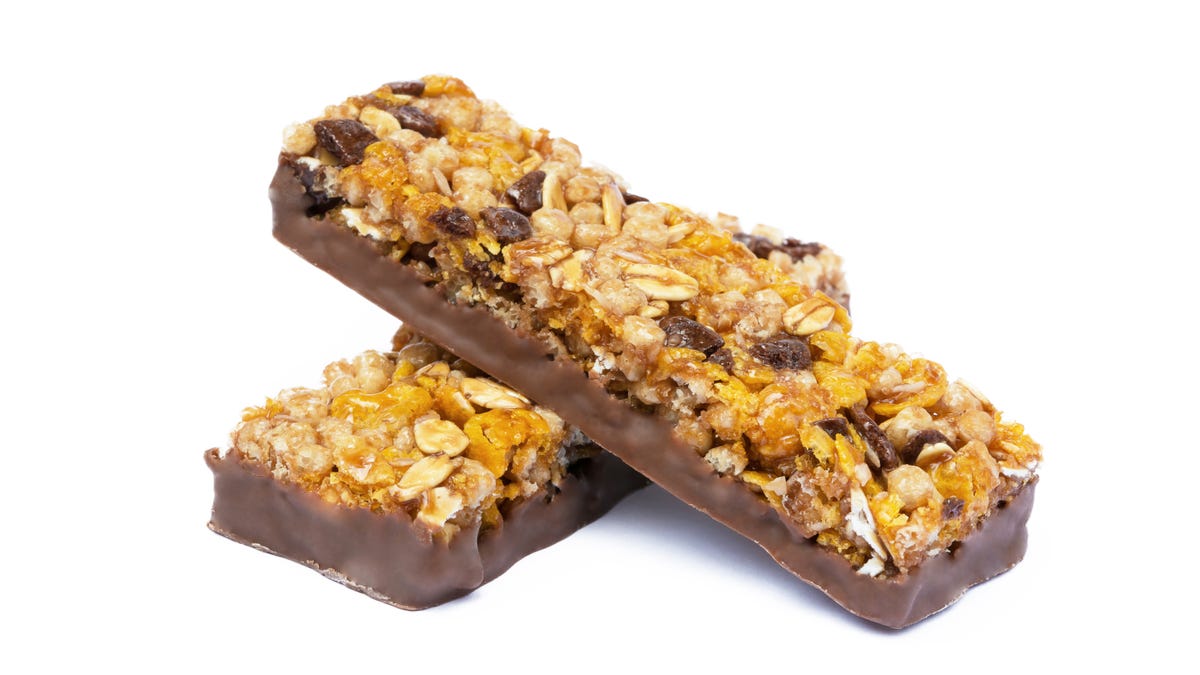Granola Is Healthier Than You Think, But Moderation Is Essential
Granola is one of the most favorite toppings for breakfast dishes. People love adding it to yogurt, smoothies, and acai bowls; serving it over pancakes, waffles, and French toast; and using it in trail mix, granola bars, and baked treats like muffins, fruit crisps, and cookies.
“Granola is popular for its long shelf life and convenience, making it an ideal choice for those on the go who need a quick energy boost,” says Jen Messer, a nutrition consultant and registered dietitian at Jen Messer Nutrition. “Plus, it tastes great and has a satisfying crunch.”
However, not all granola is made the same – just because it’s tasty and contains healthy ingredients doesn’t necessarily mean it’s always good for your health.
What Is Granola?
Granola is a crunchy snack and breakfast alternative created by mixing grains, nuts, oils, and sweeteners to enhance flavor and hold everything together. The mixture is then baked slowly until it becomes crispy. You might also find additional ingredients like dried fruits, coconut flakes, and chocolate chips included. “A basic granola mix typically contains rolled oats, nuts, seeds, one or two sweeteners like honey, maple syrup, or sugar, a mild oil such as coconut or canola, and flavorings like vanilla, cinnamon, and salt,” explains Messer. It’s widely available pre-packaged, in addition to numerous homemade recipes.
Granola originated in 1863 in New York, created by a doctor and nutritionist named James Caleb Jackson. Its popularity surged during the 1960s and 1970s when a variety of “health foods” emerged, largely influenced by the hippie movement that celebrated a wholesome and natural way of living, says Katherine Tallmadge, a nutrition author and registered dietitian at Personalized Nutrition.
Is Granola Healthy?
Almost every granola type includes some nutritious ingredients, but “there’s a variation in health benefits among different granolas,” states Abbie McLellan, a clinical dietitian at Stanford Health Care. For instance, granola made with quinoa, oats, flaxseed, pumpkin seeds, and minimal added sugar will be much healthier compared to one made solely with oats and high amounts of honey.
“A quality granola provides fiber, which helps lower cholesterol and eases constipation,” she adds. “You’ll also find a good variety of vitamins and minerals based on what’s included in your granola.”
For example, a half-cup serving of a popular natural granola that features oats, wheat, and honey contains 5 grams of protein, 52 milligrams of calcium, 188 milligrams of phosphorus, 58 milligrams of magnesium, and an impressive 232 milligrams of potassium, according to the U.S. Department of Agriculture. This same product also has iron, zinc, copper, vitamin C, niacin, vitamin B6, retinol, vitamin A, vitamin E, and plenty of folate.
“Some granolas may also include ingredients that function as probiotics and support healthy gut bacteria,” adds Messer.
Tallmadge highlights the advantage of granola’s filling properties, making it beneficial for those managing their weight, as long as it’s consumed in moderation. “Oats contain essential nutrients and phytochemicals known for a wide range of health benefits,” she notes. Additionally, the nuts and seeds in granola provide well-documented advantages that are tied to heart health and a lower risk of diabetes, high blood pressure, high cholesterol, cancer, and osteoporosis.
Given these benefits, “enjoying granola can contribute positively to your health, especially when it’s made with wholesome ingredients and eaten in moderation,” says Messer.
Can Granola Be Eaten Every Day?
The crucial point here is “moderation,” as granola can also contain ingredients that aren’t necessarily healthy. “Unhealthy components in certain granolas include coconut oil and soybean oil,” mentions Tallmadge. “Coconut oil can significantly raise LDL cholesterol, which is linked to a higher risk of heart disease, and vegetable oils are often made primarily from soybean oil, known to increase inflammation,” Tallmadge adds.
Granola can also pose challenges for individuals with food allergies since many ingredients might trigger reactions. “If you have any nut or seed allergies, it’s essential to read the ingredient list closely, as many granolas will have these items,” cautions Messer. “Also, if you’re allergic to dairy, make sure to check for dairy-derived ingredients like chocolate chips.”
Additionally, granola is often high in calories—over 200 calories for just half a cup. Tallmadge advises caution regarding options that include excessive sodium or sugar. Even among healthier brands, granola can contain 24 milligrams of sodium and 10 grams of sugar per half-cup serving.
“Choose granolas that have low added sugar; if they contain significant amounts, consider them more of an occasional treat rather than daily breakfast, as high sugar intake can replace essential nutrients and lead to weight gain,” explains McLellan. “Granola can be a healthy addition to your daily diet, but it’s crucial to check the ingredient list.”

